by admin | May 7, 2011 | Gluing, Hull
Before turning the hull upside down all painting jobs have to be done. At least 4-to 5 layers of epoxy covers are needed before the final polyurethane painting can be sprayed on. The last layers – directly under the outer painted layer – must be UV resistant or at least have some UV stable ingredients if available.
Before starting the final epoxy layers (gluing & sanding & gluing & sanding) all rough faults must be repaired.


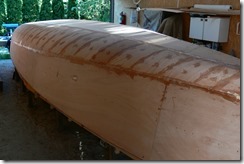
Backbone stich will be cut before epoxy fillets.
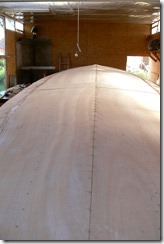
by admin | Mar 25, 2011 | Gluing, Hull
After four months of rest it is time to continue the construction of the Didi26. The second layer is missing, so do the bow cap. Well, I started working with fitting the bow cap and continue the hull work setting the radius skin. Before setting the second curved layer of plywood to install the second diagonal layer of the radius skin area the skin must be sanded. The point is not to sand the surface of the plywood itself, but to the glued junctions and the filled-in holes screwed. Sanding the solid epoxy resin is very hard work, you need to be very careful during sanding not to scarf the surface of the plywood with a hard sander directly next to the mound of epoxy glue. If you are not careful enough you can easily make deep holes into the plan surface of the skin. It must be avoid.



Bow cap was installed by mahogany. It is screwed and glued onto the edge of the bow as a cap. Sides of cap are planned the same even as the flat area of the hull from the upper tangent to the sheer clamp.

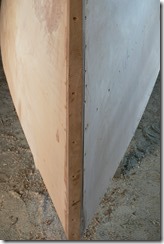
If you want to avoid the breach or slit of the thin plywood layer when you bend it, you may apply some tricks: use much more longer plywood piece of band than you have to as longer grains have higher bent resistance.
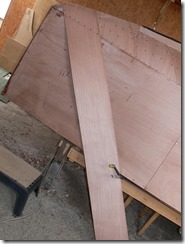
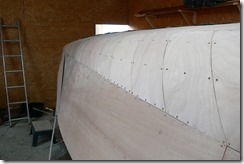

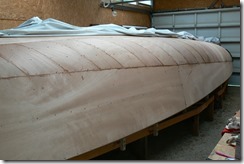
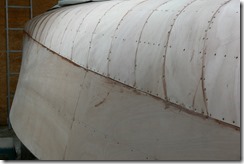
by admin | Oct 8, 2010 | Gluing
All joint surfaces or edges have to be glued to each other. The sheets of hull to the bulkheads and the cleats, and to the backbone in addition to to the stringers or the bulkhead doublers also.
Before continuing the second layer of the radius skin, I have to do a lot of things inside, especially the gluing of the junction. Waterproof (in one direction) covers for avoiding moisture condensation to the surface before winter is coming.
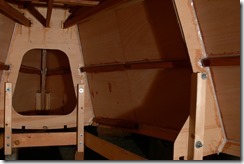
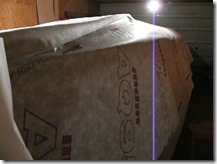
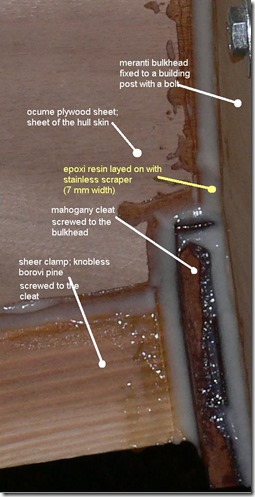
Gluing the fillets on the junction of the perpendicular surfaces inside under the hull (upside down) is quite a boring work to do. Lots of work without spectacular result. Filling of the screw head holes (outside of the hull) is a little bit more boring activity. Sanding the surplus glue material from the skin – it is a forsooth man-sized task; in addition to the winter is coming, this way the tools and equipment must be covered for prevent them against the moisture condensation.(rust). And I didn’t mention the temperature. Below 18°C if the relative moisture content is higher than 60% it is a challenge to glue. You can try it, but no there is no way to get proper result. Therefore, I heated the stove from 0°C to 20°C.
An insulated and conditioned hangar could have made my work much more productive.

















